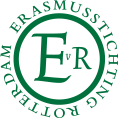Poem
Sarah Howe
Sirens
Sirens
Sirens
pickerel, n.1 – A young pike; Several smaller kinds of N. American pike.pickerel, n.2 – A small wading bird, esp. the dunlin, Calidris alpina.
I see it clearly, as though I’d known it myself,
the quick look of Jane in the poem by Roethke –
that delicate elegy, for a student of his thrown
from a horse. My favourite line was always her
sidelong pickerel smile. It flashes across her face
and my mind’s current, that smile, as bright and fast
and shy as the silvery juvenile fish – glimpsed,
it vanishes, quick into murk and swaying weeds –
a kink of green and bubbles all that’s left behind.
I was sure of this – the dead girl’s vividness –
her smile unseated, as by a stumbling stride –
till one rainy Cambridge evening, my umbrella
bucking, I headed toward Magdalene to meet an
old friend. We ducked under The Pickerel’s
painted sign, its coiled fish tilting; over a drink
our talk fell to Roethke, his pickerel smile, and
I had one of those blurrings – glitch, then focus –
like at a put-off optician’s trip, when you realise
how long you’ve been seeing things wrongly.
I’d never noticed: in every stanza after the first,
Jane is a bird: wren or sparrow, skittery pigeon.
The wrong kind of pickerel! In my head, her
smile abruptly evolved: now the stretched beak
of a wading bird – a stint or purre – swung
into profile. I saw anew the diffident stilts
of the girl, her casting head, her gangly almost
grace, puttering away across a tarnished mirror
of estuary mud. In Homer, the Sirens are winged
creatures: the Muses clipped them for their failure.
By the Renaissance, their feathers have switched
for a mermaid’s scaly tail. In the emblem by Alciato
(printed Padua, 1618) the woodcut pictures a pair
of chicken-footed maids, promising mantric truths
to a Ulysses slack at his mast. But the subscriptio
denounces women, contra naturam, plied with hind-
parts of fish: for lust brings with it many monsters.
Or take how Horace begins the Ars Poetica,
ticking off poets who dare too much: mating savage
with tame, or snakes with birds, can only create such
horrors, he says, as a comely waist that winds up
in a black and hideous fish. The pickerel-girl swims
through my mind’s eye’s flummery like a game
of perspectives, a corrugated picture: fish one way
fowl the other. Could it be that Roethke meant
the word’s strange doubleness? Neither father
nor lover. A tutor watches a girl click-to the door
of his study with reverent care, one winter evening –
and understands Horace on reining in fantasy.

Sarah Howe
(Hong_kong, 1983)
Sarah Howe is a British poet, academic and editor. Born in Hong Kong to an English father and Chinese mother, she moved to England as a child. Her poetry is precisely painted and aesthetically striking, often grappling with, and delighting in, problems of cultural identity and representation. Like Kei Miller’s explorations of hybridity and cross-cultural identities, Howe’s poetry is inventive, ...
Poems
Poems of Sarah Howe
Close
Sirens
pickerel, n.1 – A young pike; Several smaller kinds of N. American pike.pickerel, n.2 – A small wading bird, esp. the dunlin, Calidris alpina.
I see it clearly, as though I’d known it myself,
the quick look of Jane in the poem by Roethke –
that delicate elegy, for a student of his thrown
from a horse. My favourite line was always her
sidelong pickerel smile. It flashes across her face
and my mind’s current, that smile, as bright and fast
and shy as the silvery juvenile fish – glimpsed,
it vanishes, quick into murk and swaying weeds –
a kink of green and bubbles all that’s left behind.
I was sure of this – the dead girl’s vividness –
her smile unseated, as by a stumbling stride –
till one rainy Cambridge evening, my umbrella
bucking, I headed toward Magdalene to meet an
old friend. We ducked under The Pickerel’s
painted sign, its coiled fish tilting; over a drink
our talk fell to Roethke, his pickerel smile, and
I had one of those blurrings – glitch, then focus –
like at a put-off optician’s trip, when you realise
how long you’ve been seeing things wrongly.
I’d never noticed: in every stanza after the first,
Jane is a bird: wren or sparrow, skittery pigeon.
The wrong kind of pickerel! In my head, her
smile abruptly evolved: now the stretched beak
of a wading bird – a stint or purre – swung
into profile. I saw anew the diffident stilts
of the girl, her casting head, her gangly almost
grace, puttering away across a tarnished mirror
of estuary mud. In Homer, the Sirens are winged
creatures: the Muses clipped them for their failure.
By the Renaissance, their feathers have switched
for a mermaid’s scaly tail. In the emblem by Alciato
(printed Padua, 1618) the woodcut pictures a pair
of chicken-footed maids, promising mantric truths
to a Ulysses slack at his mast. But the subscriptio
denounces women, contra naturam, plied with hind-
parts of fish: for lust brings with it many monsters.
Or take how Horace begins the Ars Poetica,
ticking off poets who dare too much: mating savage
with tame, or snakes with birds, can only create such
horrors, he says, as a comely waist that winds up
in a black and hideous fish. The pickerel-girl swims
through my mind’s eye’s flummery like a game
of perspectives, a corrugated picture: fish one way
fowl the other. Could it be that Roethke meant
the word’s strange doubleness? Neither father
nor lover. A tutor watches a girl click-to the door
of his study with reverent care, one winter evening –
and understands Horace on reining in fantasy.
Sirens
Sponsors
























